This
post was originally published on
this siteOriginally posted at: http://www.nerdfitness.com/
“Wait, so butter is good again? And cheese too? But now fruit is bad? What the hell!”
Keto is the hottest trend in health and fitness these days – move over cavemen, sorry Dr Atkins. There’s a new low carb sheriff in town.
So what’s up with Keto?
You heard from your coworker that his friend’s neighbor’s girlfriend’s dog’s walker that they “went Keto” and lost crazy weight and feel better than ever.
Which led you to this article, asking: “Steve, Is Keto worthy of the hype? Tell me more!”
Depending on who you talk to, Keto can help you lose weight, fix a litany of health problems, make you smarter, help you build more muscle, grant you the power of levitation, and also do your taxes.
Next year’s taxes.
Of course, you might talk to others who say the diet is brutally restrictive, difficult to comply with long term, and just doesn’t work in today’s modern world.
In fact, U.S. News ranked it 39th out of 39 diets for these very reasons![1]
And thus, you have questions:
- What are ketones?
- Can I go half-Keto?
- Can I strength train on Keto?
- Can I do the Keto diet wrong?
- How do I know I’m in ketosis?
- Got some sweet-ass Keto recipes for me?
And I got answers.
I also have plenty of corny jokes that will make you both groan and smile.
In exchange, I’ll share cute animal gifs to make sure you’re still paying attention, like this one:

I know what you’re thinking:
“Steve, animal gif bribes? That’s low, even for you. And that carrot will surely knock that adorable bunny right out of ketosis because of its high carb content.“
Both accurate statements. But let’s get back on track.
If you want to avoid making incorrect food choices when it comes to going Keto (like Thumper above), you gotta make sure you’re doing things right!
In this Beginner’s Guide to the Keto Diet, I did my darndest to bring together advice and information that will apply to 95% of the population.[2]
I am saying all of this because the Keto Diet is one complex mofo.
It has a ton of rules, can make you feel like crap before it makes you feel amazing (maybe), and it’s tough to stick with unless you have a plan to follow.
Okay, let’s get into KETOOOOOOOO
What is the keto diet or KetoGenic Diet?
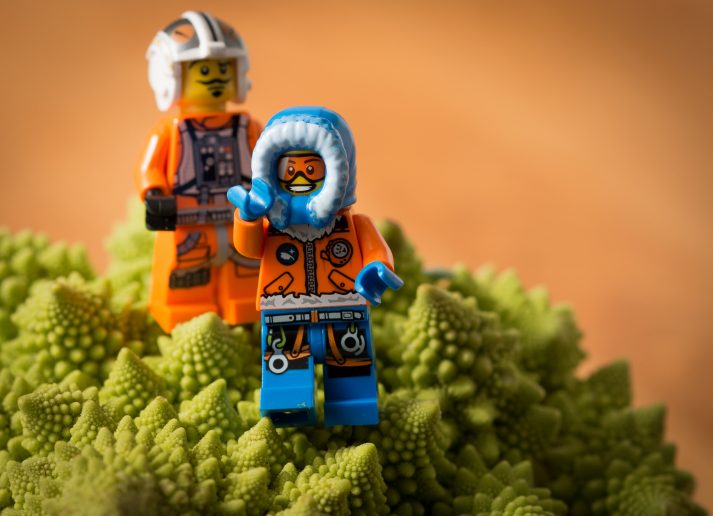
The Ketogenic diet, or Keto diet, is a food strategy in which you drastically reduce your carbohydrate intake and replace it with fat in order to get your metabolism to a state called ketosis.
In ketosis, your body converts fat to fuel to burn for energy like Tony Stark burns Captain America for being uptight.
Get it?
Because Captain America is a square. [3]
Don’t worry, the jokes will only get worse from here.
When you’re in ketosis, your body is burning fat for fuel, and this can help create a serious of big wins for you in the “get healthy, lose weight, look good naked” department.
In order for ketosis to happen, the body needs to be absent its preferred fuel source: glucose (sugar!).
This can happen in one of TWO ways:
- Fasting: by not eating at all, your body will burn through your glucose stores and be forced to start converting fat to ketones for fuel.
- Eating in a “Keto” way: essentially, only fueling your body with fat and avoiding consumption of foods that can be readily converted to sugar.
Where does that sugar usually come from? Generally speaking, carbs. [4]
And boy do we love carbs.
A typical American Diet is more than 50% carbs. And more than 60% of our country is overweight. Is one causing the other? Or are they just correlated?
I’d argue both.
And I’m the nerd writing this.
So, there.
Eat carbs, burn carbs, store sugars, lather, rinse, repeat. Very little fat-burning is taking place – and you’re adding to your body’s sugar storehouse, and that’s what eventually winds up packing the fat onto your body!
This is an overly simplified video explaining the process:
So what happens if you get rid of those carbs and replace them with another fuel source? That’s when you start burning fat.
Compare a typical carb-heavy american diet to somebody who is “Keto” – they eat a diet very high in fat, with moderate amounts of protein and minimal amounts of carbohydrates.
Still with me?
Great.
So if you do an extended fasted period, or only eat foods that line up with the Keto Diet, your body is going to be forced to burn fat for fuel.
Another thing to note: when you eat carbs, your body produces insulin to deal with the increase in sugar/glucose in your bloodstream. When you minimize carbohydrate consumption, this can result in less insulin production, and your body can become more insulin sensitive, which has a host of health benefits.
Depending on how strict you are choosing to be with Keto, you’ll probably pick one of the following strategies:
- Less than 50g of carbs
- Less than 20g of net carbs
- 5% of your total calorie intake
Which one is for you? We’ll get to that. Just know that everybody is a unique snowflake, and everybody will be different when it comes to entering ketosis and staying in ketosis.
There’s no hard and fast rule to which “Keto diet” strategy you need to follow, but it helps to start with one to get the ball rolling.
In short, you’ll need to pick the one that puts you into ketosis, which requires you to pay attention, track your results, and act like a scientist.
When you’re in ketosis, this can lead to ramped-up weight loss for some, and increased physical potential, lower insulin levels, increased brain function, and other awesomeness for others.
Allow me to answer your next question.
What are ketones?
 If you don’t care what ketones are and are just here for the weightloss stuff, skip to the next section. If you do care about ketones, strap in and let’s get weird.
If you don’t care what ketones are and are just here for the weightloss stuff, skip to the next section. If you do care about ketones, strap in and let’s get weird.
When your body doesn’t have carbs/glucose to burn for energy, you’ll need to dig into your body’s fat storehouse to get fuel.
Enter the hero of this story: your liver.
Yes, the same liver you abuse during dollar draft night at O’Houlihans.
In the absence of glucose, your liver takes your stored fat and breaks it down into usable compounds called ketone bodies, or ketones.3
These ketones can be used by your body and your brain for fuel! In addition, “increased blood ketone levels may directly supress appetite.”[6]
The reason many feel differently on a Keto diet is because their brains are being fueled by a completely different source than at any point in the past.
There are three types of ketones, which is important to know if you want to sound pretentious at parties:
- Acetoacetate
- Beta-hydroxybutyrate
- Acetone
It’s also important to note that ketones are different from a keytar, which is what Michelangelo used to defeat Shredder in the cinematic masterpiece, Ninja Turtles:

If you are wondering, “Steve did you write this entire section just so you could make a keytar joke?” you wouldn’t be wrong.
But let’s get back on track: There are two ways for your body to fuel itself off of ketones:
- It can make the ketones itself during periods of fasting or due to consumption of fat and the absence of glucose. Woot for home cookin’.
- Consume actual ketones – these are called “exogenous ketones,” which I’ll cover later in the article.
This concludes our boring sciencey section about ketones and allows us to get back to the real reason you’re here.
Will I lose Weight on the Keto Diet? What are the Other Benefits of Keto?
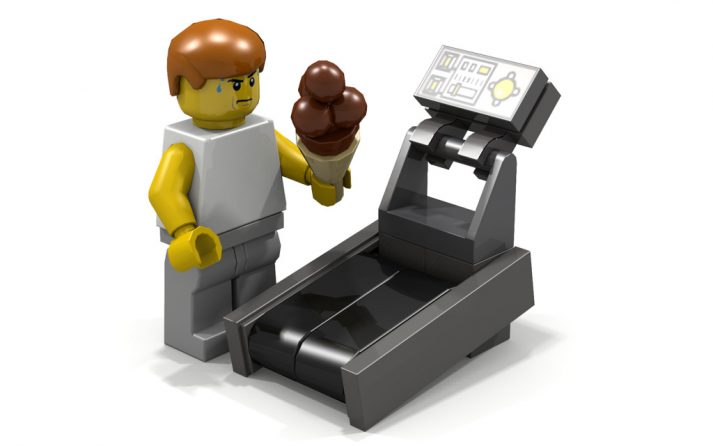
Great question.
The answer: Probably.
One of the tenets of the Nerd Fitness Rebellion is “You can’t outrun your fork,” which means we believe nutrition is 80-90% of the “lose weight” battle.
So let’s dig into how the Keto Diet factors in here.
When your body is consistently in the process of breaking down fat into ketones, you enter ketosis.
Imagine you have a pile of coal (stored fat) for the winter – when you shovel some of the pile into the furnace for heat (energy), your pile of coal gets smaller. In ketosis, YOU are getting smaller.
You can find study[7] after study [8] after study [9]in which people on a Keto diet lost weight and improved tons of health markers.
There’s also another reason most people lose weight on the Keto Diet
Thermodynamics.
I discuss this in great detail in my “The Perfect Diet” article, but I’ll give you the summary here:
When somebody eats a Keto Diet, they are nearly eliminating an entire macronutrient, carbohydrates.
And what foods are primarily made up of carbohydrates? Bread. Pasta. Candy. Soda. Chips. Bagels. Fruit smoothies. These are calorically dense, nutritionally deficient foods that people tend to overeat.
When you eliminate all of these bad foods in a restrictive diet like Keto, you’re going to consume fewer calories overall. And when you burn more calories than you consume, day in day out, for weeks or months at a time, you’re likely to lose weight.
This is why most calorie restricted diets result in weight loss regardless of the composition of the food consumed.
Note this ignores the concept of quality of food, muscle synthesis, body composition, etc. and JUST focuses on a smaller number on the scale.
Anecdotally, one some people become keto-adapted, they feel satiated on fewer calories – which results in easier weight loss.
And yes, the opposite is true: one can ALSO overeat on Keto in order to GAIN weight. So don’t expect to eat 6000 calories of butter, avocados and bacon and lose weight.
In addition to helping with weight loss, the Keto diet has been used to treat epilepsy[10], help with Type II diabetes[11], polycystic ovary syndrome [12], acne [13], potential improvement in neurological diseases (Parkinson’s[14] and multiple sclerosis[15]), certain types of cancer[16], and reduces the risk factors in both respiratory and cardiovascular diseases[17]. Emerging studies are digging into its effects on Alzheimer’s [18]and other conditions as well.
Here’s a video specifically related to Keto and cancer:
NOTE: I’m not a doctor. I don’t play one on TV. I did not stay at a Holiday Inn Express last night.
I am not advocating Keto as a panacea for all of your ailments.
I simply point out the above studies as STARTING points for you to conduct your own research and discuss with your doctor if switching to a Keto Diet is an experiment you can conduct.
What’s the Difference Between Keto, Low Carb,and Paleo?
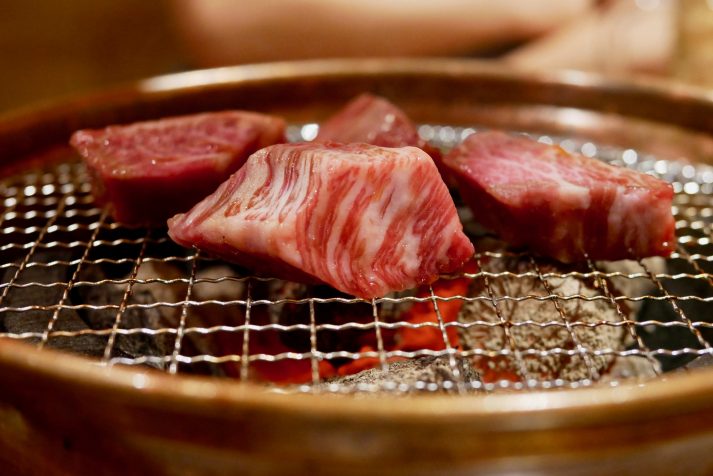
I’ll cover this quickly!
Keto, Paleo, and Atkins are all considered “low carb” diets, though “low carb” means different things to different people, different groups, and different studies.
They each have different things that are important as well:
Keto targets low carb (less than 5% of your total), and focuses on a very high fat content – 70% of your diet. It eliminates grains, tubers, and most fruits due to the carb content. You need to be diligent in your tracking and can measure if you’re in ketosis.
Paleo targets low carb through focusing on protein and fats, elminates dairy, but doesn’t limit fruit or sweet potato intake. In this diet you don’t track but rather eat until you’re full.
Atkins has different tiers of adherence, focuses on low carb, high protein, high fat. You eventually add more nuts, low carb vegetables, and low carb fruits back into your diet.
I’ve written a monster guide on the Paleo Diet, which I recommend you read in addition to this article if you’re trying to decide which option works best for you.
Like every diet, you can absolutely do any of these diets and still gain weight and get unhealthier – so they each come with caveats, and require you to understand the food you’re putting in your body.
Deal? Deal. Here’s an otter with a baby otter, you’ve earned it:

How Do I Do the Keto Diet?
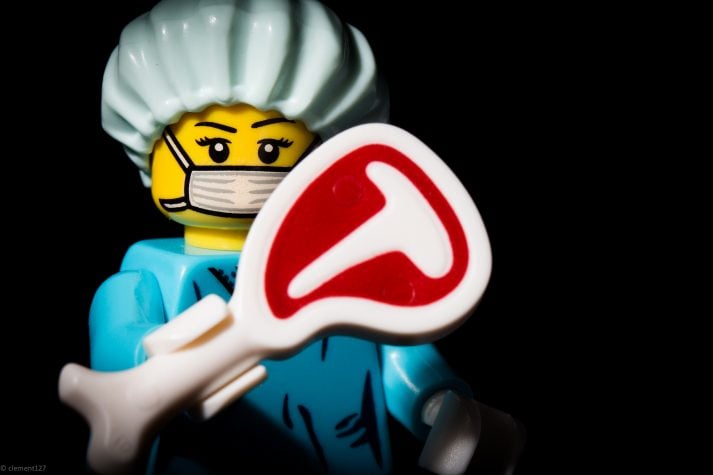
“Steve, I want all the potential benefits and potential good-looking side effects of going Keto. I also want a million dollars. But for now, I’ll settle for the benefits of Keto. How do I do it?”
In my opinion, there are two reasons why somebody wants to go Keto, and that should dictate your level of dedication to the Keto cause:
- If you are just trying to lose weight, it doesn’t really matter whether or not you’re actually in ketosis – provided you are consuming fewer calories on average compared to how you were eating before. This can be aided by minimizing carbs and upping your fat intake.
- If you are treating this like an experiment and are tracking your ketosis compliance, then you need to be more diligent in your tracking and actually make sure you’re in ketosis.
I imagine most people fall into Group A, but we’ll cover both Group A and Group B moving forward – and tracking your results is the best way to make progress.
So let’s say you’re “going Keto.” This can be a few different things depending on your situation:
- Tracking net carbs: 20 net grams per day or less
- Tracking regular carbs: 50 grams per day or less
- As a percentage: 5% of daily calories
Although people adjust their ratio of protein and fats, the hard and fast rule tends to be around the severely restricted consumption of carbohydrates.
Ruled.Me has a fantastic Ketogenic Macro Calculator that simplifies the heck out of this process, but I’ll also show you the math if you want to nerd out:
#1: Determine your total calorie intake goal. Calculate your “basal metabolic rate” (how many calories you burn per day). I am 6’0″, 185 lbs, and my BMR is roughly 1900 calories. I am active, so I’m multiplying this number by 1.3 to get to my active daily calorie burn: 2470 – let’s make this an even 2500.
#2: Take 5% of that number for your total amount of carbs. Divide by 4 (there are 4 calories per gram of carbohydrate). Some people stick to a rule of “Less than 50 grams total” or “20 net carbs total.”
I have 125 calories for carbs, divided by 4, equals 31 grams of carbs. In my instance, I would keep it simple and target 30g of carbs to start.
#3: Next, calculate your protein requirements. If you are active, Target 0.8-1.2 g of protein per pound – 0.8 if you are sedentary, 1.2g if you are super active. You can multiply this by 4 to see how many calories total that would be.
That would mean something like 180g of protein for me. 180 x 4 = 720 cal. Which means so far I have used up roughly 840 calories of my 2500 calories, so I have 1660 calories remaining.
#4: What’s left over? Fat! There are 9 calories per gram of fat. So divide your remaining calorie count by 9 to see how many grams of fat you should eat per day.
In my example, I have 1660 calories remaining, divided by 9, which means I need to consume 185 g of fats per day. Yup. This is a lot of fat.
#5: Put it all together, write it down, start tracking your food, sucka! I’m sorry for calling you a sucka, I didn’t mean it. In my example I’m looking at 185g of fat, 185g of protein, and 30g of carbs.
This should be a good STARTING point. You’ll need to adjust along the way based on how your body responds, but it can get you going.
Next, you’ll create a meal strategy of sorts – examples later in the article – that pick the foods in the previous section and combine them in a way that fits your particular strategy to enter ketosis.
And that means you gotta know your food!
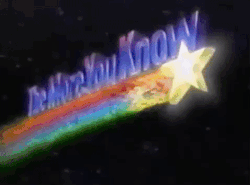
For everything you eat, you want to know the following:
- Number of calories
- Grams of fat
- Grams of protein
- Grams of carbs
- Grams of fiber
With carb intake requirements being very low, many ‘healthy’ foods would still be enough to knock you out of ketosis depending on how many of them you eat. Which means you need to be hyper aware of your carb count.
Let’s quickly talk about the concept of “net carbs,” and why this is so important:
A vegetable that is 5 grams of carbs and has 3 grams of fiber will have a “net carb” total (subtract the fiber number from the carb number) would be 2.
Here are a few examples showing the ‘net carb’ effect:
- Asparagus: 7g carbs, 4g fiber = 3g net carbs
- Kale: 7.3g carbs, 2.6g fiber = 4.7g net carbs
- Broccoli: 11g carbs, 5g fiber = 6g net carbs
WHY THIS IS IMPORTANT: Fiber is really good for your body, and oftentimes when somebody goes from eating hundreds of grams of carbs per day to less than 50g, they are eliminating a lot of high fiber foods they used to eat (bread, whole grains, etc.).
By consuming leafy greens like kale or veggies like broccoli, one can still get enough fiber and remain in ketosis.
Of course, no good healthy eating strategy goes unmarketed, why you’ll see plenty of “Keto-friendly” snacks that advertise “zero-net carbs” even though they have many grams of carbs in their nutritional breakdown – it’s countered by the fiber.
In addition, a lot of “high fiber” protein bars or “low carb snacks” often contain sugar or artificial sweeteners that could knock you out of ketosis.
Which means two things:
- Consuming a pile of “Keto friendly” processed snacks all day long could absolutely knock your body out of ketosis. Check the ingredients, and try to focus on eating REAL food.
- If the occasional Keto snack keeps you from getting hangry (hungry plus angry) between meals, and keeps you from overeating during your regular meals – knocking you out of ketosis – then snacks are fine.
What Can I eat on the keto diet?

“Steve, I appreciate you talking to me like I’m 5 years old and walking me through this process step by step. I don’t care what everybody on the internet says about you, you’re an okay guy.
I now have my macros. What the heck do I get to eat on a Keto Diet?”
As I explained above, in order to be in Ketosis you need to eat a diet that has minimal carbs, high fat, and adequate amounts of protein.
Following this type of nutritional strategy can result in ketone body production and increased fat-burning. We talked about this in our Beginner’s Guide to the Paleo Diet. Although fat gets a bad rap, fat is an essential nutrient and it’s not actually the fat that’s making us fat.
Here’s a look at the things you should primarily be eating on Keto:
- Meat. This includes red meat (like steak) as well as pork products (sausage and bacon and ham) and white meat (like chicken and turkey). Fatty meats can be helpful in a Keto diet.
- Fish. Look for high-fat fish, like tuna and salmon.
- Eggs and dairy. If you think there’s nothing better than butter and cheese, you’re in luck! Eggs, butter and cheese are all a big part of eating Keto. You’ll want to make sure your items are as unprocessed as possible, so stick to cheeses like cheddar, mozzarella and blue, and look for butter and egg products that are organic or come from free-range animals.
- Healthy fats. Nuts, seeds, and avocados are your keys here. Almonds, macadamia nuts, Brazil nuts, and nut butters.
- Dressings and oils. Greek dressing, caesar dressing (though check the ingredients), ranch, aoili. When you need an oil, stick to extra-virgin olive oil or coconut oil
- Veggies. These are your cruciferous greens like spinach, kale, broccoli, cauliflower, that sort of thing.[19]
- Meatless proteins. Tempeh, tofu and seitan can take the place of meats in a vegetarian or vegan Keto diet. Not as optimal in this nerd’s opinion, but you do you, boo.
This is an overly simplified breakdown what you can eat, but it will serve as the foundation for the rest of the article. And yes, I’ll get into specific meals soon.
Still here? I’m proud of you.

What foods Can’t I Eat on the Keto Diet?
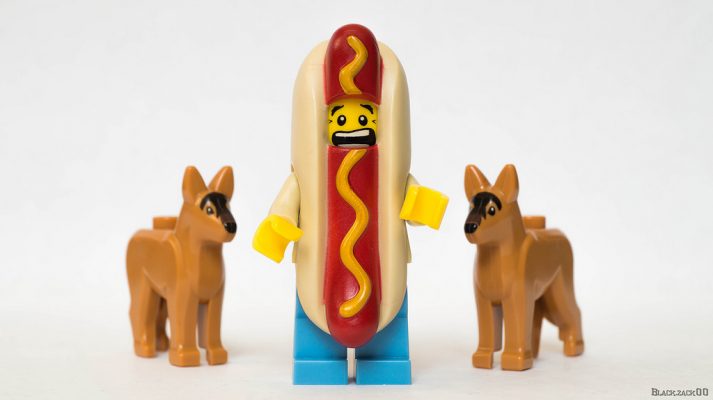
We covered what you CAN eat.
Now let’s cover all of the foods you should avoid while eating Keto:
- Sugars. This can include desserts like cake and ice cream and cookies. And don’t forget to watch out for hidden sugars in things like ketchup! Your body LOVES to burn sugars, and if it has those, it’s not going to create ketones out of fat to burn.
Liquid calories. Soda, juices, smoothies, and any beverages that contain carbs and sugar.
- Starches. This means pasta, potatoes, sweet potatoes, rice, bread, cereals, and anything made with wheat or corn flour. They’re big sources of carbs, and once again, they’ll stop your body from entering ketosis. It also means corn, which is a grain, not a vegetable.
- Diet foods. We told you to avoid sugars, but “diet” foods are big red flags on Keto as well (and on most healthy eating plans!) They’re heavily processed and high in sugar and tend to wreak havoc on your body.
- Fruits. What, no fruit? Fruits tend to be high in fructose (a sugar). High sugar = no ketosis. (I feel like maybe I’ve said that already.) A few berries can be OK, but only if you’ve planned for their net-carb intake into your daily total.
- Beans. Wait, what? Steve, I thought beans and legumes were healthy! You even eat them as part of your Paleo-ish diet! They can be, but they’re also higher in carbs and can potentially cause inflammation that works against weight loss.
- Unhealthy fats. Healthy fats, like those in olive oil and nuts, are great. But that big glob of mayonnaise in your tuna, or the canola oil you’re frying in? Stay away from them on Keto.
Does this sound like a lot to eliminate all at once? It’s because it is. This is where most people fall off the wagon.
They see that list and say “I could never give up (insert your favorite non-Keto food here).”
If you’re already overwhelmed and worried you can’t stick with this diet, I got ya. I made a free 10-level Diet Blueprint (think like leveling up in a video game) that walks you through eliminating many of these foods through a series of small changes you can make that won’t freak you out.
For a lot of members of the Rebellion, these incremental changes are a great place to start while you get your feet wet and start to learn about the food you’re cramming down your piehole. I’ll send it to you free when you sign up in the box below:
Download our free weight loss guide
THE NERD FITNESS DIET: 10 Levels to Change Your Life
- Follow our 10-level nutrition system at your own pace
- What you need to know about weight loss and healthy eating
- 3 Simple rules we follow every day to stay on target
How do I KNOW I’m in Ketosis?
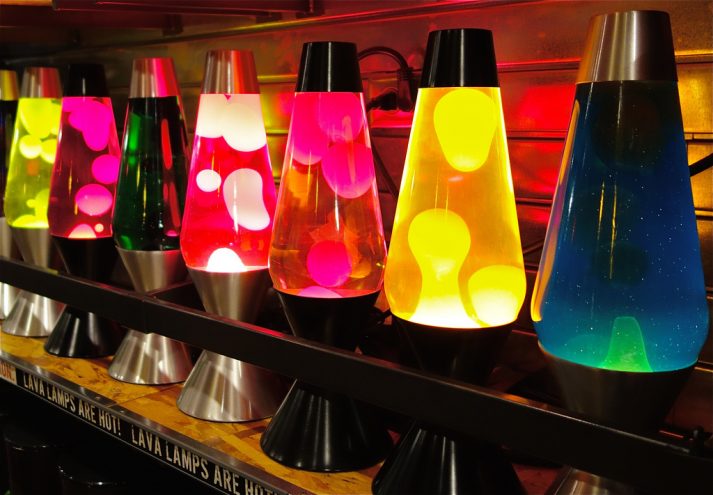
If you’re going to follow a Keto Diet, you probably want to learn how to determine if you’re actually in ketosis, right?
I believe there is something more important here to consider:
- Are you getting results?
- Does it matter?
If you are aiming for a “look pretty good, feel pretty good” strategy – as laid out here – an 80% of solution that results in a decent physique when combined with strength training and exercise.
So if you “go Keto” and you are losing weight and feeling better, does it REALLY matter if you’re in ketosis or not? I don’t want your success derailed because you panic about the exact amount of ketones in your bloodstream!
“Steve, I hear you. But I’m doing this Keto thing as an experiment, or I want to see if I get other benefits too. Tell me how I can measure my ketone levels!”
Okay okay okay, fine! We’ll do all the things that YOU wanna do.
There are three ways to determine whether or not you’re in Ketosis:
- Test your breath
- Test your urine
- Test your blood
In my research, I found that testing one’s breath is the least popular of the options – I only found poorly reviewed expensive testers. So if you happen to LOVE this method and have an inexpensive testing option you want me to link here – put it in the comments!
Blood testing options are accurate but do require a blood sample (duh) and thus are less convenient than the next option…
I bought these Ketone Testing Strips and they seem to be getting the job done for testing the level of ketones my body is producing. I simply pee on the strip and then match the color at the end to the side of the bottle to determine the level of ketones in my urine.
For the first week or two of becoming keto-adapted, testing your ketone levels daily (or once in the morning and at night) is reasonable. Don’t test your levels multiple times throughout the day day, especially after just eating, and then freak out if the number isn’t what you wanted it to be.
NOTE: Once your body becomes fat adapted, it might use ketones more effectively which means fewer ketones are excreted through your urine/breath. For this reason, your tests could show lower ranges of ketone levels than the actual amount your body is producing. This is normal, expected, and not a problem.
“WHAT ARE THE DIFFERENT RANGES FOR KETONES!?”
Ketones are measured in terms of millimoles per liter in your blood:
- 0-0.4 mmol/L = regular American diet (50%+ carbs)
- 0.5-7 mmol/L = prolonged fasting / ketogenic diet
- 15-25 mmol/L = Diabetic ketoacidosis = danger, Will Robinson!
When you’re in ketosis, you’ll hang out in the second range. Depending on what you’re eating, if you’re supplementing with exogenous ketones, if you fasted, and how long you’ve been in ketosis, where in that range might vary for you – but that’s okay!
My research also showed that there’s no particular benefit to having a higher ketone amount as long as you are in ketosis.[20]
Let’s quickly talk about ketoacidosis – it’s a condition in which the body produces too many ketones that can’t be used, rendering the bloodstream too acidic – it’s a concern, but for a small percentage of people.
Diabetics in particular are at risk for diabetic ketoacidosis, and they should work with their doctor before adjusting their medication or adopting a keto diet strategy.
If you are STILL panicked, speak with your doctor. And relax. Look at these sleeping puppies, calm yourself down, and then we can get back to work:

The Killer Combo: Fasting + Keto Diet
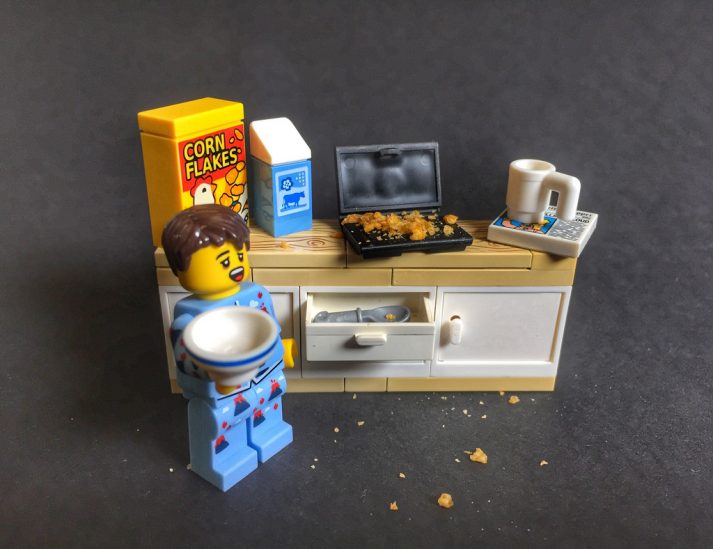
As previously stated (like, 5 minutes ago), there are two ways to insure you get into ketosis:
- Fasting
- Eating in a way that induces ketosis (low carb).
As many will tell you in the Reddit’s /r/Keto – and even members of our own Team Nerd Fitness:
Eating Keto + Intermittent Fasting = a great combo for simple weight loss.
We actually have an amazing success story here on Nerd Fitness, Larry, who followed our strategies, decided to go keto and start intermittent fasting. He ended up losing weight, getting stronger, AND overcame the challenges of rheumatoid arthritis (click on the image for his story)!
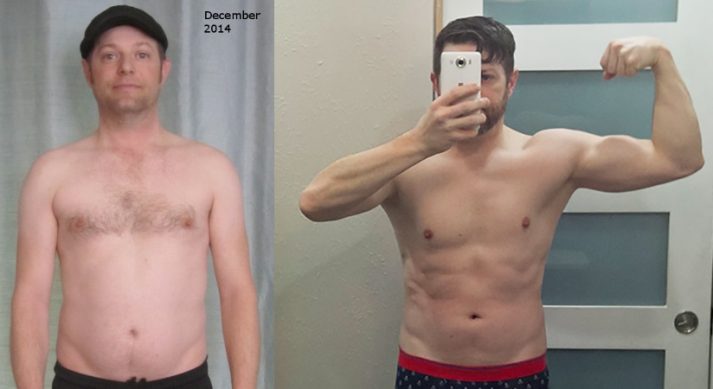
We’ve covered Intermittent Fasting extensively on Nerd Fitness, so I’ll simplify how it works here:
- Only eat during a certain window of the day. The most popular version (and the one I follow) is ‘skip breakfast’, and only consume calories between Noon and 8PM.
- Occasionally do a 24 hour fast: eat dinner one night, and then don’t consume more calories until the following dinner. Some people actually do this every day, they call it OMAD (one meal per day).
- Men and women are affected differently by intermittent fasting, and your results may vary.
As your body enters a fast period when there are no sources of glucose energy readily available, the liver begins the process of breaking down fat into ketones. Fasting itself can trigger ketosis.
Fasting for a period of time before kicking off a Keto-friendly eating plan COULD speed your transition into the metabolic state of ketosis, and fasting intermittently while in ketosis could help you maintain that state.
I personally love fasting for the simplicity: I skip breakfast every day and train in a fasted state. It’s one less decision I have to make, it’s one less opportunity to make a bad food choice, and it helps me reach my goals.
WHY KETO + IF works = eating Keto can be really challenging. And every time you eat, it’s an opportunity to do it wrong and accidentally eat foods that knock you out of ketosis. You’re also tempted to overeat. So, by skipping a meal, you’re eliminating one meal, one decision, one chance to screw up.
Note: if you’re thinking “Steve, am I losing weight because I’m skipping 1/3rd of my meals for the day, AND eliminating an entire macronutrient?” – Yes. Now, both Keto and IF have secondary effects that could also be factoring in.
Your value may vary!
You need to decide what works for you: If going 24 hours without eating would make it hard for you to be successful on Keto, similar results have been seen when starting the diet without a fast, so don’t worry if that’s not doable right now!
Some people find success in eating ONE big meal a day, others do 16/8 fasting, and other people eat throughout the day.
It comes down to total calories consumed, total carbs consumed, and your level of misery while adjusting!
Keto needs to work for you, not the other way around.
How to Avoid the “Keto Flu” and other negative side effects

So here’s the bad news: While ketosis is a great state for your body eventually, it can feel crappy at first.
Really crappy. Like, “brain fog, hungry, weak, irritated” levels of crappy.
Keto-induction, or the period where your body is entering ketosis, is a pretty big shock to the system, especially if you’ve been eating a lot of carbs.8 It can come with side effects that feel like the flu (fatigue, upset stomach, aching, insomnia and more), but it’s not caused by the ketosis itself.
Keto flu actually comes from carbohydrate withdrawal. That’s right; your body can basically be addicted to carbs, and have trouble dealing with a reduction in them!
It takes time for your body to become “Keto-adapted.”
Think of it this way: your body is a spoiled toddler who has been happily fueled by candy and soda for the past 3 years.
You suddenly tell the toddler: “no more soda, no more candy. You’re going to eat broccoli and grilled chicken like a big boy.”
How do you think this kid is going to respond?
Poorly. Temper tantrums, mood swings, crying, and rage at the lack of delightful sugar. Eventually, this kid will be better off in the long term as a result…but it’s gonna take some time.
This ‘carb withdrawal’ can be so dramatic for some people that it ruins them for days or weeks, and they give up.
In these instances, the love affair with Keto ends prematurely, and the person goes crawling back to the comforting, delicious, but ultimately unfulfilling carb-heavy comfort foods.
Remember that list of ‘worst’ diets with Keto at the top? It’s for reasons like this: people give up on the diet quickly, and it’s tough to stick with long term.
“STEVE, HOW CAN I AVOID THE KETO FLU?”
For MOST people, the Keto flu and getting headaches comes down to the body adjusting to becoming fat-adapted, dehydration, and electrolyte imbalances. When you eliminate carbohydrates from your diet, you might also be removing the consumption of certain electrolytes:
- Sodium
- Magnesium
- Potassium
When you specifically try to add these electrolytes back into your diet, you’ll be able to offset some of the chemical changes in your body and compensate for the lack of those electrolytes that you used to consume as part of your old diet.
How does one do that? For sodium, you can simply add salt to your food (heyyyy sodium!), and for potassium and magnesium you can eat kale, other leafy greens, avocado, nuts.
And in BOTH instances, you can add electrolyte supplements to a bottle of water!
The LyteShow brand of electrolyte supplement has been tested by Team NF and is recommended
I have many friends who struggled through the first few weeks of Keto and found that electrolyte supplementation made the process significantly more bearable.
Which brings us to another important topic:
This momma dog and her puppies:

And THIS important topic…
Can I strength Train and Do Keto? Cardio and Keto? Crossfit and Keto?
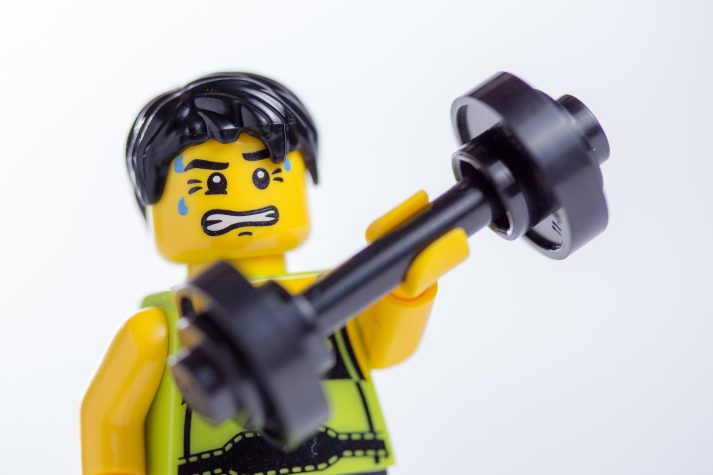
“Steve, I’m down to try Keto. But I don’t just want to lose weight, I want to build a physique I’m proud of. Meaning I wanna look good nekked.”
We’re going to approach this section with three caveats:
- I don’t care what the “optimal” way to eat or train is. Unless you are an elite level athlete, being “good enough” will suffice. This is true for your diet, for your training. The OPTIMAL way for you to train and eat is whatever method you can actually stick with!
- We’ll look at what happens to your body on both cardio and strength training. In case you are interested in following this solution.
- You might suck at everything for a few weeks. As pointed out in the The Ketogenic Bible: “Significant declines in physical performance after one week of following a ketogenic diet; however, performance levels are restored after about six weeks, although it sometimes takes longer.”
- The jury is still out on all of this – studies have suggested that reducing carb consumption dramatically could impact performance negatively depending on the activity, and below I’ll show you studies that present the exact opposite conclusion.
#1) “Steve, I like Strength Training. What does Keto look like for me?”
Great. I do too. In fact, I train in a fasted state four days per week. When you strength train or train intensely, your body starts to use up the glycogen stored in your muscles.
And you’re probably wondering “Steve if I don’t consume carbs, which becomes sugar, which my muscles store as glycogen…am I gonna run out of glycogen and my strength training might suffer?” Good question. Maybe.
Does eating in a Keto way alter your body’s reliance on glycogen stores in the muscles? Does it change how much glycogen your muscles use or how quickly these stores are replenished? Maybe. We’re still learning.
I did find multiple studies in which strength training was either not impacted or positively impacted by a Keto Diet:
- A 2012 study put 8 male gymnasts on a 30 day Keto diet – they lost more fat mass and increased lean body mass while. Suggesting Keto can help with body composition, which is probably why you are strength training to begin with.
- A 2016 study looking at CrossFit programming showed no significant difference in muscle mass or performance between a Keto group and control group.
- A 2017 study worked with 25 strength training men – both groups gained muscle mass, while the Keto group lost more fat.
Now, this isn’t law, and your results may vary. What this simply means is that there have been studies done that show one can do resistance training or Crossfit while eating Keto and not lose gains or muscle mass. Other studies show the opposite. Which means…
Your results MAY vary. Make sure you give it enough time to push through the Keto flu, performance-suckage phase to get a true answer for your situation.
Also: unless you’re a competitive athlete or compete in powerlifting competitions, this might not matter as much! Athletic performance is often negatively impacted once somebody gets to a low enough bodyfat percentage, but it doesn’t stop people chasing that “ripped” six-pack abs look!
#2) “Steve, I’m a runner/biker/etc. and I always carb-load. Sounds like Keto isn’t for me, right?”
Maybe not. Your body can only store 1600-2000 calories worth of glucose at any time – but might have 40,000+ calories worth of fat stored in the body. So instead of having to consistently eat gels and goos and snacks to keep the glucose levels high, what happens if you switch to “Keto-adapted” and fuel yourself with fat?
Let’s go to the science:
Earlier studies had suggested that a moderate-carb diet provides better endurance by increasing the concentration of glycogen in your muscles, but newer research seems to be swinging more in the direction of Keto.
As it turns out, the Keto diet has been tested in ultramarathoners, Iron Man trainees and endurance athletes in multiple studies, and in all cases, ketosis resulted in enhanced body composition and some of the highest rates of fat-burning ever recorded!
A 2016 study looked at 20 ultra-marathoners and Ironman distance triathletes – half of which were instructed to be on a fat-adapted diet for at least 6 months and the other 10 were on a traditional carb-focused nutritional strategy. The results:
- Both groups had same perceived level of exertion during a 3 hour trial run.
- The keto group had a fat oxidation rate of 2.3 times higher than the carb group, at an average of 1.5 grams per minute.
- There was no significant differences in pre- or post exercise glycogen concentrations.
Just like with strength training, this MIGHT work for you – or you might better off as a carb-adapted runner and athlete. You have to do what works for you.
My above caveat still stands: unless you are an elite athlete, this should be less of a concern for you – follow the diet that makes you look and feel good, and then base your training progress of your previous day’s results!
#3) “Steve, I’m not a competition-level ANYTHING, but I like exercising and want to look good.”
While dietary changes make up at least 80% of your weight-loss efforts, exercise will help you stay healthy and build a body you’re proud to look at in the mirror.
So track your workouts, track your nutrition, and work on getting better with it – running one second faster, doing one more rep, lifting 5 more pounds, etc. Compare yourself to your past self.
#4) “Steve I read this study that says Keto + Athlete = good/bad/ugly”
Fair. Do what works best for you! In my research, and in learning from people that I trust and admire in this space:
Studies are often focused on short term ketosis (a few days or weeks), which could result in adverse performance in athletes who have not become fully Keto-adapted yet.
We are all unique snowflakes and your mileage may vary depending on your physiology. So who cares if you lift 5 pounds less! If Keto works for you and makes you look better, keep doing that.
If you are going to try Keto + Strenuous Exercise, consider the following advice: Keto might work for you! It might not!
The recommendation from Dr. Steve Phinny:
- Allow 2-4 weeks to become Keto adapted
- Make sure your electrolytes are in balance (see our section on supplements)
- Eat enough protein to ensure your muscles are getting the tools they need to rebuild themselves.
- See how your body responds – course correct as necessary.
Elite performance chaser? Consider “targeted ketogenic dieting” – introducing timed carb intake strategically around training – which is beyond the scope of this beginner guide.
Supplements and Keto – Exogenous Ketones!

You’ve read this far, learning about how our body has to work hard to create Ketones for energy.
And you’re probably thinking what I’m thinking: “What’s the airspeed velocity of an unladen swallow?” “Can’t I just ingest ketones directly?”
They refer to these as “exogenous ketones,” if you were wondering.
You weren’t, but that’s okay.
Caveat: I have not consumed exogenous ketones, though I have heard they can taste like jet fuel. And they can be pricey – though coming down in price thanks to Keto’s popularity.
So, if you LOVE to drink expensive jet fuel for some potentially, better results or higher athletic performance, best of luck to ya.
The two types you’ll encounter are:
This 2017 study showed “exogenous ketone drinks are a practical, efficacious way to achieve ketosis.”
In addition, A 2018 study showed that consuming Ketones lowered ghrelin [21] and thus our appetite.
I would put exogenous ketones in the “only if are aiming for strict ketosis” category, if you’re an elite athlete, or seeking a specific outcome of a medical condition under professional supervision.
If you really want to nerd out about exogenous ketones, consider this article from somebody I respect and trust, Dr. Peter Attia, on his experiences with them.
I won’t delve too much deeper on the topic until I can experiment with them myself and report back!
“What about other supplements Steve? I can’t get enough fat in my diet!”
In the previous section we discussed electrolyte supplementation, and for somebody that’s an athlete or unable to get enough protein in their system, a high quality protein powder can help – just note the carb content!
Many people struggle getting enough fat in their nutrition, and have found success fat supplementation with MCT (medium-chain triglyceride) oils and powders.
These are two types I’ve experimented with:
MCT oil can cause digestive challenges and make you immediately run to the bathroom, while the powder version might not cause as much of an issue. This was my experience.
Your mileage (to the bathroom) might vary! Start with small amounts of MCT before increasing the quantity.
Outside of these suggested supplements, the best “supplement” is a healthy eating plan. I know I know, a cop out answer. If you need more sodium, first try adding a little salt to your meals. If you need more potassium, eat some spinach before you head to the supplement aisle at the grocery store.
Not only will these methods help you feel better, but you’ll be setting yourself up for better long-term eating habits.
Our overall stance on supplementation here at Nerd Fitness: supplements cannot replace the effects of a healthy diet and regular exercise. But for some people, these might be the right fit.
Home stretch! Now we just have delicious food and fun stuff to discuss. Yayyyyy!

Keto Meal Plans and Keto Recipes For the Wins!
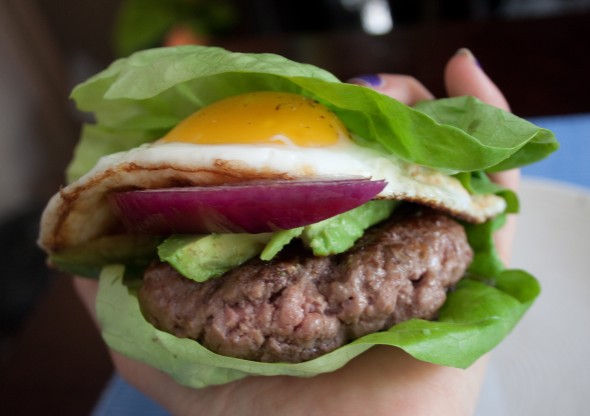
“Steve I know I can eat things like meat, cheese, and vegetables, but I’m gonna go ahead and need you to do the heavy lifting for me. Give me a sample day on Keto and links to recipes.”
I considered saying “Let me google that for you” when it comes to “keto recipes”, but I’m too nice of a guy.
Let’s hit the big three meals to start:
BREAKFAST:
LUNCH:
DINNER:
CONDIMENTS: Ruled.Me has some great resources on what keto condiments you can use to spice up your dishes without losing ketosis. Here’s a quick list:
- Coconut Oil
- Olive Oil
- Heavy whipping creme
- Full fat cream cheese
- Full-fat sour cream
- Mayonaise
- Mustard
- Full fat Ranch, Caesar, Bleu, Cheese, Italian
Depending on your macros, you might be adding butter, ghee, fatty dressings or oils, or supplementing with MCT/Coconut oil to hit your macros for the day.
This should at least get you started in thinking that you can still eat AMAZING food while eating Keto.
What are Keto Friendly Snacks and Keto Deserts?

Everybody loves snacks. Unfortunately, most of the snacks you’ll encounter anywhere are definitely not Keto-friendly.
I’m firmly on Team No Snack, as I do practice intermittent fasting and try to eat BIG meals instead of lots of small ones – as I point out in the Intermittent Fasting article, the number of times you eat throughout the day won’t impact your waistline as much as the total quantity of calories.
That’s right, your metabolism isn’t “stoked” by eating small meals or grazing throughout the day. You can get in trouble if you eat big meals and then eat snacks between those big meals.
What matters is overall compliance – if snacking in between meals allows you to NOT overeat during your big meals, and ALSO you stay under your caloric intake goal for the day, then snacking is more than okay.
As far as desert goes, the same holds true: if you save room in your macros and calories for a low calorie, Keto-compliant desert, go crazy. Just don’t delude yourself into thinking that eating 5,000 calories of “Keto cookies” and “Keto ice cream” is going to make you healthier.
Got it? These snacks and deserts need to fit into your macros/calorie goals in order for this whole “I went Keto” thing to actually work for you.
EASY KETO SNACK IDEAS. In addition to this entire subreddit about Keto Snacks, you can think in these terms:
KETO DESERT IDEAS:
Outside of Keto snacks and Keto deserts which everybody asks about, there’s one other big question that you probably have….
Can I Drink Alcohol on the Keto Diet?

We’ve talked about Alcohol extensively on Nerd Fitness and the same rules apply here for Keto.
You’re gonna need to be super diligent with your carb counting when it comes to your adult beverage choices.
A Sam Adams has almost 20g of carbs, enough to knock somebody out of ketosis after just one. As a Bostonian, this makes me sad.
This is even worse for mixed drinks! No more rum and cokes. No more margaritas. No more old fashioneds with simple syrup. No more daiquiris or mai tais or pina coladas.
Instead, you need to do your research into the carb content and calorie count of your favorite alcoholic drinks:
- Wines: 4g carbs per 5 oz., 90-120 cal
- Whiskey, vodka, rum, gin, tequila: 0g carbs, 90-120 calories
- Low carb beer: 1-4g carbs, 60-100 calories
If you’re drinking spirits, mix with club soda (NOT tonic, which is loaded with sugar) or learn to drink neat.
If you’re drinking beers, opt for the low-carb variety! Just google the beer brand you’re considering and go from there.
Just like with deserts and snacks, you need to make Alcohol work for your macros and your calorie counts for the day.
Other things to note about Alcohol: you might get drunk much faster as a result of being in Ketosis, you might have a worse hangover, and you might wake up in a chicken costume covered in siracha on the other side of town if you drink too many “Keto friendly” whiskeys.
Not that I would know. Shut up.
Where can I Learn More About the Keto Diet?
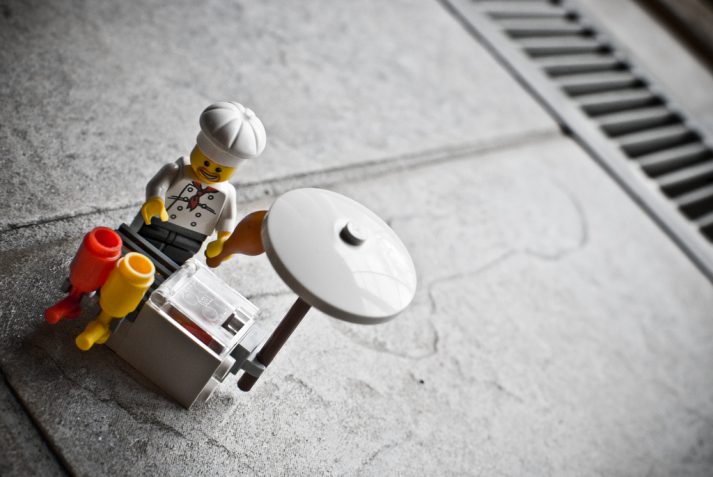
Phew. This article was focused on telling you everything you need to know so that you can confidently get started with Keto.
I want to give a HUGE shout out to the book, The Ketogenic Bible, by Dr. Jacob Wilson and Ryan Lowery, which was my first stop in my Keto research.
If you’re a super nerd and want to learn about all of the science behind this stuff, or if you’re intrigued by the research into Keto + certain health conditions or improvements, it’s absolutely worth a read.
If you’re interested in going further with your Keto adventure, consider all of the following below!
OUR COACHING AND COURSES:
Pardon my shameless self-promotion, but we have helped a few hundred thousand people through Nerd Fitness over the past decade, and we have some key resources that can help people adapt or adopt a more Keto-friendly lifestyle:
- 1-on-1 Coaching with Nerd Fitness: partner with one of our trained coach who will build you a custom workout program, and help you make better nutritional choices. We’ll have you take photos of each meal you consume, guide your decisions, and help you hit longer term goals. Our average client stays 9-10 months!
- The Nerd Fitness Academy: Learn the right mindset, be surrounded by a supportive online community, follow the workout programs, complete boss battles and quests, and level up your character as you level up your life. Although this isn’t a keto-focused course, we have a TON of Academy members doing Keto who would love to support you.
KETO RECIPE RESOURCES – In addition to simply googling “keto recipes” which I know you can do because you’re a big boy or big girl, here are three of my favorite resources:
PODCASTS ABOUT KETO: If you love to listen instead of read, I’m doubly proud of you for making it all this way. Here are three of my favorite podcast episodes on the subject, in order of complexity. The science versus is the most approachable:
Your First Week on the Keto Diet – Start With This

Okay, you’re here because you’ve committed to going Keto, and now there’s just one final step: actually doing it.
So how do you get started? What’s next for you between reading this article and 30 days of Keto success? A plan!
Fear not, for I have built a step-by-step plan for you right here:
#1) Take before photos and measurements. Take front and profile photos of yourself. You don’t need to look at them or share them anywhere, but I PROMISE you’re going to want those. You can also write down your weight and take any measurements you want.
Write this stuff down and keep it secret, keep it safe.
#2) Calculate your calories and macros. You can do the math as I explained above, or simply use the calculator over on Ruled.Me. Know your number of goal:
- Calories
- Carbs
- Fat
- Protein
#3) Go shopping for your Keto foods, and order your Keto snacks on Amazon. Look at the recipes above and pick the ones that don’t scare you to make. Keep snacks readily available in case of “holy crap I am so hungry and I just want to eat a damn pizza and spaghetti and snort Pixy Stix.”
#4) Consider picking up an electrolyte supplement to help you through the first few days/weeks of grogginess/lethargy as you move through the Keto flu stage. You can also look into the urine test strips or blood testers – I find that knowing I’m in ketosis, it helps keep me accountable and motivated that all these changes are actually working!
#5) Eat out frequently and enjoy fast food? Google your “(fast food restaurant of choice) + keto” so you have a go-to option even when you’re on the road.
#6) Tell somebody. The biggest problem with Keto is simply sticking with it. If you have roommates or a significant other or friends you can speak to and get them on your team to support you. In fact, send them this article and recruit them to try it with you! That way they’re not enabling you to slip up, they’re keeping you accountable!
Don’t have anybody to tell? Our NF Academy has the most supportive community on the internet.
7) Consider kickstarting your week with a fast. This is going to be a mental and physiological challenge. Consider skipping breakfast tomorrow – it’s one less meal you have to prepare, one less chance to knock yourself out of ketosis, and can help kickstart the keto-adapted phase!
8) Throughout the week: Focus on big wins, allow yourself to be miserable – Keto flu is REAL, giving up carbs is hard, and your body is going to hate you:
- Drink plenty of water and supplement with electrolytes if you find yourself getting headaches. Add more salt to your food and focus on consuming more leafy greens to get that electrolyte balance back in place.
- Lean on your support group. Talk to others who have been where you are, ask questions, share your struggles!
- Eat snacks when you are miserable. I’d rather you eat some snacks and slightly overeat on your calories than be so miserable that you give up.
- Track your adherence. Use MyFitnessPal (though not their recommended macronutrient breakdown!) to track every meal you eat – this is very important in the first week as you’re educating yourself dramatically.
- Do your best – you might slip up with one meal or realize you accidentally ate carbs. This is not the end of the world. Forgive yourself, learn the lesson, and get right back at it with the next meal.
9) Keep going, or adjust. Depending on your body, your environment, the way you used to eat, and your physiology, this first week will either be “hey, not too bad” or “Never again.”
Either way, you’ll learn something. I do hope you push through this for a full 30 days and see how your body responds once it’s out of the Keto Flu stage!
10) At the end of the month, take more photos and measurements and compare them your starting “before” stats. Do you feel better? Do you look better? Did you enjoy the process? great! Keep going. Hated it? Great! You found a method that doesn’t work for you. Adjust and create your own strategy.
Other Frequently Asked Questions about The Keto Diet.

1) Who should NOT attempt the Keto Diet?
Very important question. We all know this article is NOT medical advice, and regardless of your health you should discuss your nutritional strategies with your doctor or dietitian.
As pointed out in The Ketogenic Bible, going into Ketosis is not recommended for:
- Carnitine deficiency
- CPT I/II deficiency
- Beta oxidation defects
- Impaired gastrointestinal motility
- Pregnancy
- Kidney failure
- Type 1 Diabetes
- Pancreatitis
- Gallbladder disease
- Impaired liver function
- Impaired fat digestion
- Gastric bypass surgery
- Abdominal tumors
If you’re concerned about your health with regards to Keto, speak with your doctor and consider a Keto Diet under supervision.
2) Do I have to count calories on Keto?
Not necessarily, but it certainly helps when starting out. That is true whether you’re doing Keto or just trying to eat healthier. In fact, I would almost make it a requirement until you learn the basics about everything you eat.
The most important thing you’ll need to track is your carb and fiber intake. You’re trying to eat less than 20-50 grams of net carbs each day, and making your diet 70% fat. Not all calories are created equal when it comes to healthy eating and weight loss, so they’re not a focus on Keto.
3) Eating all of this fat and cholesterol is going to make me fat and block my arteries, right?
Wrong! Dietary cholesterol has been shown to not increase blood cholesterol – check this article here. And fat is healthy when consumed as part of a nutritious meal. As pointed out in this study, a Low Carbohydrate Diet resulted in decreased bodyweight, abdominal circumference, diastolic blood pressure, triglycerides, insulin, and an increase in high-density lipoprotein cholesterol (the good stuff).
It’s when fat is combined with carbohydrates in diabolical combinations that we start to get into trouble.
4) I’ve heard my breath and my urine might smell funny on keto. Is that true? What do I do about it?
Look, we don’t want you to be self-conscious about how your pee smells. But it’s true; as part of the byproducts produced through the creation of ketone bodies, you may notice a fruity smell in your urine and on your breath.
This is totally normal, and it comes from the acetone that’s produced through ketosis. Acetone isn’t used for energy, so it’s excreted in urine and breath.
Not only is this not bad, it’s a sign that you are fully in a ketogenic state.
But you probably don’t want your breath to smell like a slightly weird fruit salad, right? The easiest answer is to brush your teeth often, and to wait it out. This effect usually goes away once you’re on the diet for a while as your body learns to use more ketones.
5) Can I eat keto if I’m a vegetarian/vegan?
Yes. We mentioned above in our list of foods to eat that you can substitute meatless proteins for meat in a vegetarian keto diet.
If you also want to remove the dairy and eggs to make a vegan keto plan, in addition to the vegan meat options, consider adding mushrooms and “vegan dairy,” such as full-fat vegan cheeses, as well as a larger quantity of healthy fats like coconut oil.
You can follow the low-carb principles of keto along with your vegetarian or vegan eating plan.
6) Does this mean no carbs forever and ever? How long am I supposed to go Keto for?
You will get results from Keto for as long as you stay Keto. If you go Keto and lose a bunch of weight, but then go back to how you were eating before…you’ll end up right back where you started.
So, our advice would be to give this a true attempt: stick with Keto for 30 days as an experiment. You might find that you LOVE how it makes you feel and want to stick with it.
Also, as your body learns to become keto-adapted, you can start to mix in sliiiightly higher carb days here and there with minimal adverse effects.
If you go Keto and decide that this is not the best strategy for you, that’s cool too. Pick the parts of it that work for you, take what you’ve learned, and start to experiment and build your own diet.
What else do you want to know about keto?

If you’ve read this far, congratulations! You get the Medal of Heroes, and you definitely know enough to get started on the keto diet.
You’ve unlocked this gif of a turtle eating a raspberry:
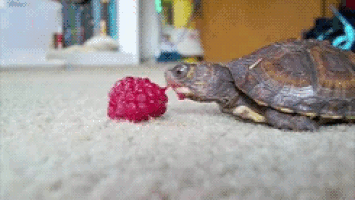
The Keto Diet will work for you….If you can stick with it.
Here’s my nerdy advice:
Be less concerned about “staying in ketosis” and instead concern yourself with how to make the Keto Diet work for you on a consistent basis.
Try it out for 30 days.Take measurements and before and after photos, and then determine after 30 days if it works for you. And if it does or doesn’t, adjust and course correct.
The worst thing to do would be to go Keto for 30 days to try to lose weight quickly, just to go back to how you were eating before.
Instead, we want you to make permanent progress. So find a path that allows you to be pretty damn good, nearly all of the time.
Whether or not Keto is for you, keep looking around here at Nerd Fitness. Maybe Paleo or Intermittent Fasting is a better fit for you, or you’d prefer to work with a coach to help combine all of the above into a system that fits your exact lifestyle.
Whatever it is, I’m glad you’re here. And I’m glad you’re trying.
WHAT OTHER QUESTIONS DO YOU HAVE?
What other questions do you have about Keto?
Have you had a great experience with Keto?
Have you had a BAD experience with Keto?
Favorite snacks or resources?
Leave your experiences in the comments below!
-Steve
PS: If you liked this guide to keto but need more guidance, check out our 1-on-1 coaching program and schedule a free consultation to see if we’re a good fit for each other!
PPS: I guarantee I probably pissed off half the internet for some reason with this article.
Whether it was a typo, the fact that I referenced a particular study that didn’t line up with your already deeply-held view on keto, or because you you don’t like my jokes. I hope we’re still cool.
If you want to rage and call me an idiot for whatever reason, email me at thatsnotnice@jkdontemailme.biz
###
ALL Photos Sources can be found in this footnote here[22]. Special shout outs to Clement127 and Black Zack who have two amazing streams you should check out!
Footnotes ( returns to text)
- US News Best Diet Trends: Tied for dead last.
- If you are in the other 5% and on the hunt for extreme Keto discussions or advanced tactics, see the “more resources” section of this article.
- He’s also my hero, so BACK OFF
- Yes, eating too much protein can knock you out of ketosis too, but I’ll address this later.
- A Ketone Ester Drink Lowers Human Ghrelin and Appetite – a Study.
- Long-term effects of a ketogenic diet in obese patients study
- Metabolic impact of a ketogenic diet compared to a hypocaloric diet in obese children and adolescents: study
- A low-carbohydrate as compared with a low-fat diet in severe obesity: study.
- Ketogenic diet and other dietary treatments for epilepsy: study
- Low-carbohydrate, ketogenic diet to treat type 2 diabetes: study
- The effects of a low-carbohydrate, ketogenic diet on the polycystic ovary syndrome:study
- Learn about this here in the Journal for Drugs in Dermatology study
- Treatment of Parkinson disease with diet-induced hyperketonemia: study
- Reduced Mass and Diversity of the Colonic Microbiome in Patients with Multiple Sclerosis and Their Improvement with Ketogenic Diet: study
- Tumor Cells Growth and Survival Time with the Ketogenic Diet in Animal Models: review
- Effects of Ketogenic Diets on Cardiovascular Risk Factors: Evidence from Animal and Human Studies – study
- Neuroprotective and disease-modifying effects of the ketogenic diet: study
- We’ve got a guide to getting started with veggies if you’re not a huge vegetable eater.
- exceptions include if you are epileptic or targeting a higher ketone level as treatment for a specific condition. Speak with your doctor.
- the hormone that makes us feel hungry
- photo credit: clement127: BBQ Time, Barney Moss: Expedition,
Toronto History: Drum of Cordite Ketone, Legozilla: treadmill, Jun Seita: Kainomi at Serita, clement127: Where This Bones comes from?, Reiterlied: Frankensteinosaurus found a big egg, black.zack00: oooops!!!, Dean Hochman: lava lamps, sponki25: Breakfast time or got up on the wrong side of bed,
Neal Fowler: Sickly Sweet, clement127: Resolution 2015: exercise more?, black.zack00: clwon in the circus Knie, black.zack00: Happy Halloween!, Willis: Street Meat , black.zack00: Whiskey?, black.zack00 put your hand up!, clement127 On the trail, clement127 BBQ Time, clement127 Banquet












 If you don’t care what ketones are and are just here for the weightloss stuff, skip to the next section. If you do care about ketones, strap in and let’s get weird.
If you don’t care what ketones are and are just here for the weightloss stuff, skip to the next section. If you do care about ketones, strap in and let’s get weird.


























 For now classes are 6pm and 640pm at 2840 Wildwood st in the Boise Cloggers studio.
Book your class NOW!
click this ==>
For now classes are 6pm and 640pm at 2840 Wildwood st in the Boise Cloggers studio.
Book your class NOW!
click this ==>








